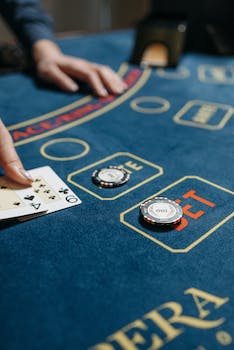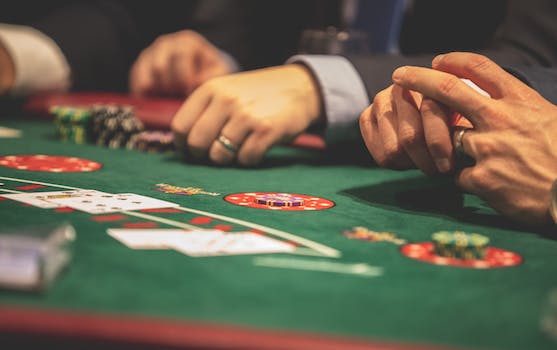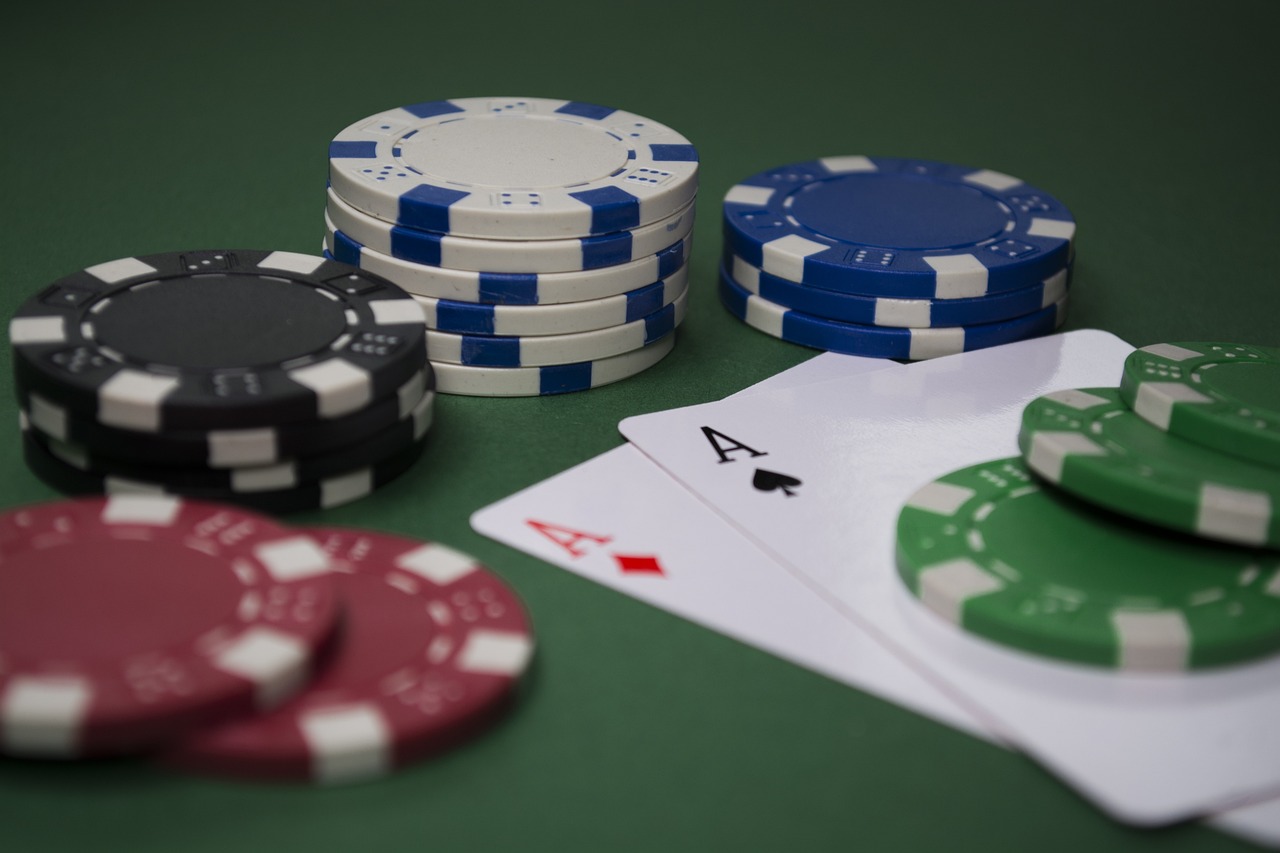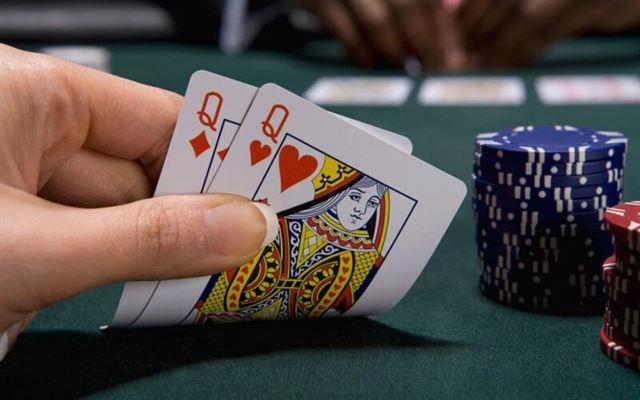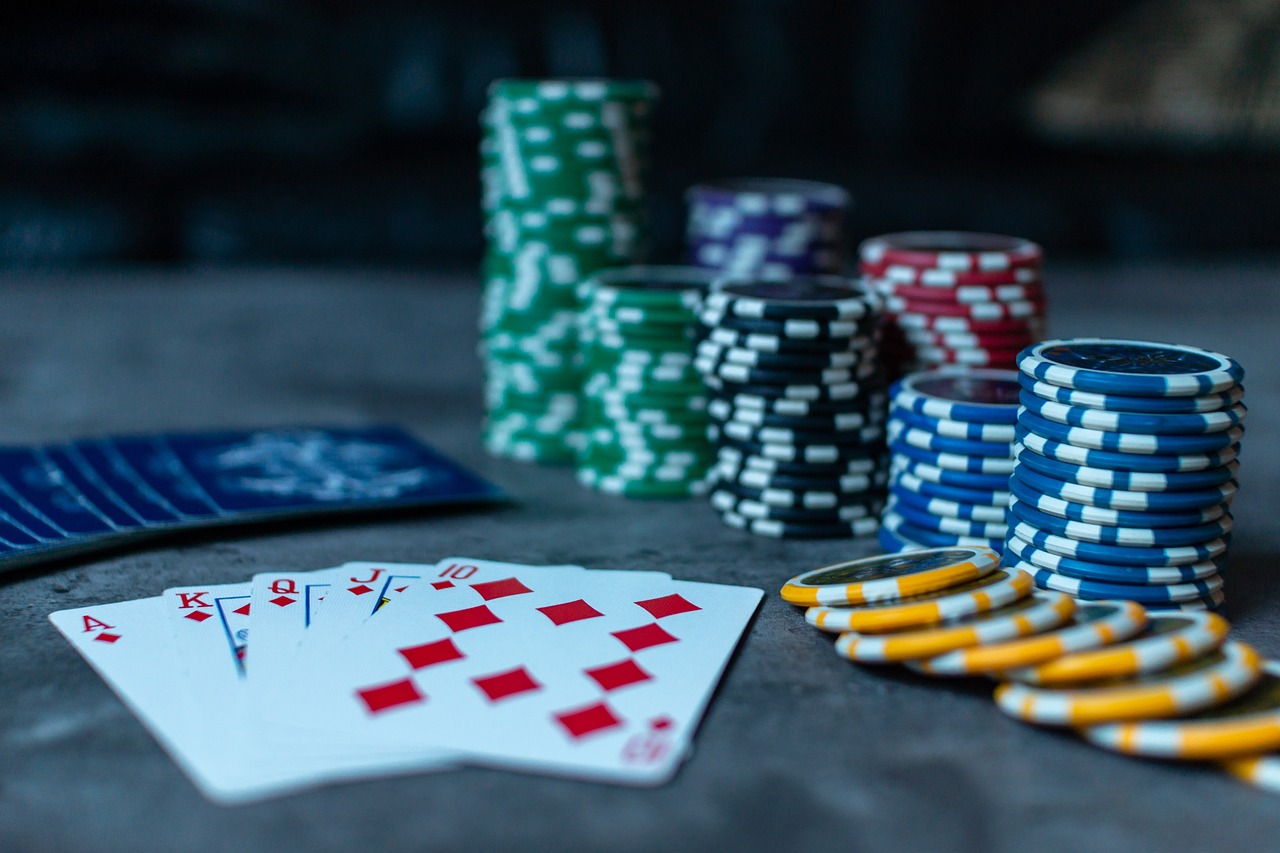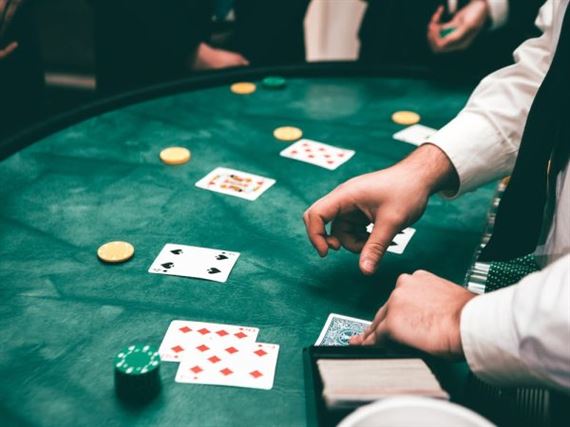In the game of blackjack, players are faced with the decision of whether to hit or stand on their hand. This decision is crucial as it can greatly impact the outcome of the game. Understanding the strategic moves of when to hit and stand is essential for players looking to maximize their chances of winning. In this article, we will explore the key factors and considerations that can help players make informed decisions on when to hit and when to stand in blackjack.
The Importance of Knowing When to Hit or Stand in Blackjack

Blackjack is a popular casino game that requires both skill and strategy. While luck plays a role in the outcome of each hand, knowing when to hit or stand can greatly increase your chances of winning. In this article, we will explore the importance of knowing when to make these strategic moves in blackjack.
One of the most crucial decisions a player must make in blackjack is whether to hit or stand. Hitting means taking another card from the dealer, while standing means keeping your current hand. The goal is to get as close to 21 without going over, and the decision to hit or stand depends on the value of your hand and the dealer’s upcard.
When deciding whether to hit or stand, it is important to consider the value of your hand. If your hand is low, such as 8 or 9, hitting is usually the best option. This is because the chances of improving your hand and getting closer to 21 are higher. On the other hand, if your hand is already high, such as 17 or 18, standing is often the better choice. The risk of going over 21 and busting is greater, so it is best to play it safe and keep your current hand.
Another factor to consider when deciding whether to hit or stand is the dealer’s upcard. The dealer’s upcard is the card that is face-up for everyone to see. If the dealer’s upcard is low, such as 2 or 3, it is more likely that they will bust. In this case, it may be wise to stand on a lower hand, as the dealer has a higher chance of going over 21. Conversely, if the dealer’s upcard is high, such as 7 or above, they have a better chance of making a strong hand. In this situation, hitting on a lower hand may be the better option, as you need to try and improve your hand to compete with the dealer.
Knowing when to hit or stand also requires an understanding of basic blackjack strategy. Basic strategy is a set of rules that guides players on the best decisions to make in any given situation. It takes into account the value of your hand, the dealer’s upcard, and the rules of the game. By following basic strategy, players can minimize the house edge and increase their chances of winning.
In addition to basic strategy, card counting can also be a useful tool in determining when to hit or stand. Card counting is a technique used to keep track of the ratio of high cards to low cards remaining in the deck. When there are more high cards left in the deck, the player has a higher chance of getting a strong hand. In this case, it may be beneficial to hit on a lower hand to try and improve it. Conversely, when there are more low cards left in the deck, the player has a higher chance of busting. In this situation, it may be better to stand on a lower hand and hope that the dealer busts.
Knowing when to hit or stand in blackjack is crucial to your success in the game. By considering the value of your hand, the dealer’s upcard, and following basic strategy, you can make informed decisions that increase your chances of winning. Additionally, card counting can be a valuable tool in determining when to make these strategic moves. So the next time you sit down at a blackjack table, remember to think strategically and make the right moves at the right time.
Mastering Blackjack Moves: When to Make Strategic Decisions

To understand when to hit or stand, it is essential to grasp the basic rules of blackjack. The objective of the game is to have a hand value that is closer to 21 than the dealer’s hand, without exceeding 21. Each card in the deck has a specific value: numbered cards are worth their face value, face cards (King, Queen, and Jack) are worth 10, and Aces can be worth either 1 or 11, depending on the player’s choice.
When a player is dealt their initial two cards, they must evaluate the strength of their hand and decide whether to hit or stand. Hitting means requesting an additional card from the dealer, while standing means keeping the current hand without taking any more cards. The decision to hit or stand is based on several factors, including the player’s hand value, the dealer’s upcard, and the overall strategy being employed.
In general, players should hit when their hand value is low, typically 11 or less. This is because the chances of improving the hand without exceeding 21 are high. For example, if a player has a hand value of 8, hitting is the logical choice as any card with a value of 3 or higher will not result in a bust. However, if the player’s hand value is 12 or higher, hitting becomes riskier as the chances of busting increase significantly.
On the other hand, standing is advisable when the player’s hand value is high, typically 17 or more. At this point, the risk of busting is greater, and it is more likely that the dealer will have a hand value that exceeds the player’s. By standing, the player hopes that the dealer will bust, resulting in a win for the player. Standing is also recommended when the dealer’s upcard is weak, such as a 4, 5, or 6, as these cards put the dealer at a disadvantage.
However, there are certain scenarios where the decision to hit or stand is not as clear-cut. For instance, when the player’s hand value is between 13 and 16, and the dealer’s upcard is 7 or higher, hitting is generally the better option. This is because the dealer’s strong upcard indicates a higher probability of them having a hand value that beats the player’s. By hitting, the player has a chance to improve their hand and potentially beat the dealer.
In contrast, when the player’s hand value is between 13 and 16, and the dealer’s upcard is 2 through 6, standing becomes the preferred move. This is because the dealer’s weak upcard puts them at a disadvantage, and there is a higher likelihood of them busting. By standing, the player avoids the risk of busting themselves and lets the dealer take the chance of going over 21.
Knowing when to hit or stand in blackjack is crucial for maximizing your chances of winning. By considering factors such as your hand value, the dealer’s upcard, and the overall strategy, you can make informed decisions that will give you an edge in the game. Remember, hitting is recommended when your hand value is low, while standing is advisable when it is high. However, there are exceptions to these rules, and it is important to analyze the specific circumstances before making your move. With practice and experience, you can master the art of strategic decision-making in blackjack and increase your odds of coming out on top.
Enhancing Your Blackjack Skills: Understanding the Best Moves to Make

To begin, let’s clarify what hitting and standing mean in the context of blackjack. When you choose to hit, you are asking the dealer for an additional card to improve your hand. On the other hand, when you decide to stand, you are indicating that you are satisfied with your current hand and do not want any more cards. The goal is to get as close to 21 as possible without going over, as going over 21 results in an automatic loss.
Knowing when to hit or stand requires a good understanding of the value of your hand and the dealer’s upcard. In general, if your hand is below 12, it is advisable to hit, as there is a high probability of improving your hand without going over 21. However, if your hand is between 17 and 21, it is usually best to stand, as the risk of going over 21 is greater.
Another important factor to consider when deciding whether to hit or stand is the dealer’s upcard. The dealer’s upcard gives you valuable information about their potential hand. For example, if the dealer’s upcard is a 2, 3, 4, 5, or 6, they are in a weak position, and you should be more conservative with your moves. In this case, it is often best to stand on a lower hand value, as the dealer has a higher chance of going over 21.
Conversely, if the dealer’s upcard is a 7, 8, 9, 10, or an Ace, they are in a stronger position, and you should be more aggressive with your moves. In this situation, it may be necessary to hit on a hand value of 12 or higher, as the dealer has a higher chance of having a strong hand.
It is also important to consider the specific rules of the blackjack game you are playing. Some variations of blackjack allow for additional moves, such as doubling down or splitting pairs. These moves can significantly impact your strategy and should be taken into account when deciding whether to hit or stand.
Knowing when to hit or stand in blackjack is a crucial skill that can greatly improve your chances of winning. Understanding the value of your hand, the dealer’s upcard, and the specific rules of the game are all important factors to consider when making this decision. By carefully analyzing these factors and using sound strategy, you can enhance your blackjack skills and increase your chances of coming out ahead. So the next time you sit down at a blackjack table, remember to think strategically and make the best moves possible.
Strategic Moves in Blackjack: When to Hit and Stand for Optimal Results
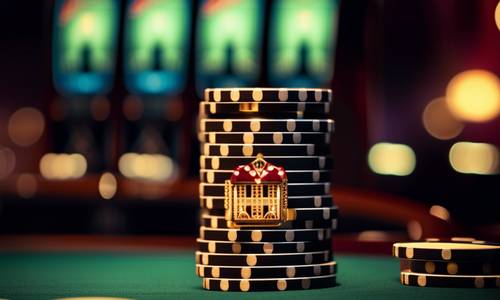
When a player is dealt their initial two cards, they must decide whether to hit or stand. Hitting means requesting an additional card from the dealer, while standing means keeping the current hand without receiving any more cards. The decision to hit or stand should be based on the player’s hand value and the dealer’s upcard.
In general, players should hit when their hand value is low, typically 11 or less. Since the Ace can be counted as either 1 or 11, it is often beneficial to hit when holding an Ace and a low-value card. For example, if a player has an Ace and a 2, the hand value is either 3 or 13. Hitting in this situation gives the player a chance to improve their hand without the risk of busting, as the Ace can be counted as 1.
On the other hand, players should stand when their hand value is high, typically 17 or more. When a player’s hand value is close to 21, hitting can be risky as it increases the chances of going over 21 and busting. Standing in these situations is a safer option, as it allows the player to maintain their strong hand and potentially beat the dealer.
The decision to hit or stand becomes more complex when the player’s hand value is between 12 and 16. In these cases, the player must consider not only their hand value but also the dealer’s upcard. If the dealer’s upcard is a low-value card, such as 2 through 6, it is generally recommended to stand. This is because the dealer is more likely to bust when their upcard is low, and the player can win without taking any additional risks.
However, if the dealer’s upcard is a high-value card, such as 7 through Ace, it is usually better to hit. The reason behind this is that the dealer has a higher chance of making a strong hand when their upcard is high. By hitting, the player increases their chances of improving their hand and beating the dealer.
In conclusion, knowing when to hit and stand in blackjack is crucial for maximizing your chances of winning. Players should hit when their hand value is low and stand when it is high. The decision becomes more nuanced when the hand value is between 12 and 16, with the player considering the dealer’s upcard. By making strategic moves based on these guidelines, players can improve their blackjack skills and increase their chances of success at the table.



